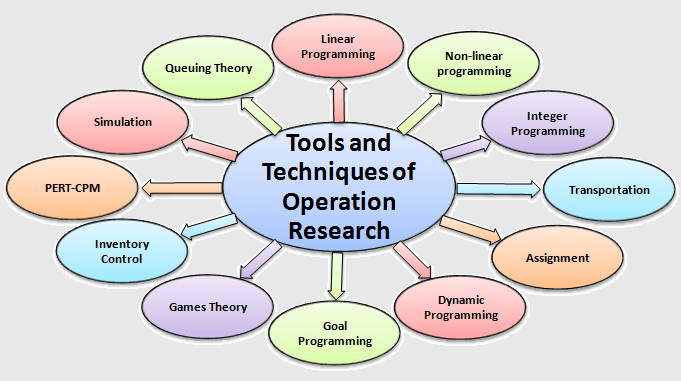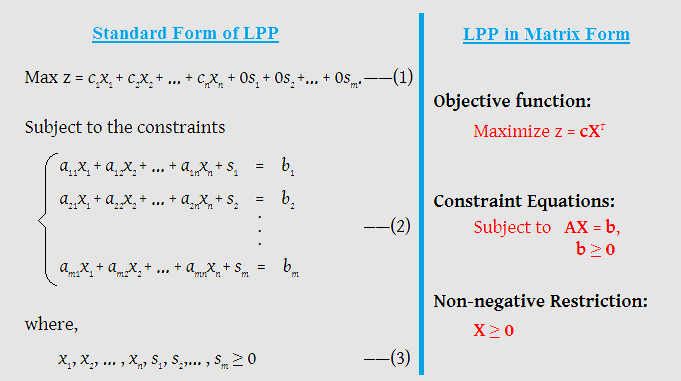
Tools and Techniques of Operation Research:
Some of the important tools and techniques used in Operation Research are as follows:
- Linear Programming:
In OR, Linear programming is used to find a solution for optimising a problem or objective. The objective may to maximize or minimize a problem. Both objective function and Constraints must be expressed in linear expressions.
- Non-linear programming:
These methods are used when either the objective function or some of the constraints are not linear in nature.
- Integer Programming:
In an LPP, if the decision variables are restricted to an integer value, it is known as Integer programming problems. In other words, these methods are used when one or more of the variables can take only integral values.
- Transportation Problem:
The transportation problem is a special type of linear programming problem in which goods are transported from a set of sources to a set of destinations subject to the supply and demand of the source and destination, respectively, such that the total cost of transportation is minimized.
- Assignment Problem:
It is a special case of a Transportation problem. It is used when the problem involves the allocation of n different facilities to n different tasks.
- Dynamic Programming:
Dynamic programming is used for solving problems that involve taking decisions over several stages in a sequence. This method starts by dividing a given problem into stages or sub-problems and then solves those sub-problems sequentially until the solution to the original problem is obtained. It is used in such areas as planning, advertising, expenditures distributing sales effort and production scheduling etc.
- Goal Programming:
It is a powerful tool to tackle multiple and incompatible goals of an enterprise.
In other words, it is used when there is more than one goal, i.e., several objectives (a real-life situation) and these several objectives have their own goals to complete.
- Games Theory:
It is used for decision making under conflicting situations where there are one or more players. In the game theory, we consider two or more persons with different objectives, each of whose actions influence the outcomes of the game. The game theory provides solutions to such games, assuming that each of the players wants to maximize his profits and minimize his losses.
- Inventory Control:
It is used in determining when and how much production or purchase.
- PERT-CPM:
PERT and CPM are the two network analysis techniques used for planning, scheduling and controlling complex projects which can be characterized as networks.
- Simulation:
Simulation is a very powerful technique for solving many complex models which cannot be solved otherwise and thus it is being extensively applied to solve a variety of problems. In fact, such models are solved by simulation techniques where no other method is available for its solution.
- Queuing Theory:
Queuing theory works out the expected number of people in the queue, expected waiting time in the queue, expected idle time for the server etc. These calculations then help in deciding the optimum number of service facilities under given constraints.
(Source – Various books of college library)
Copyrighted Material © 2019 - 2024 Prinsli.com - All rights reserved
All content on this website is copyrighted. It is prohibited to copy, publish or distribute the content and images of this website through any website, book, newspaper, software, videos, YouTube Channel or any other medium without written permission. You are not authorized to alter, obscure or remove any proprietary information, copyright or logo from this Website in any way. If any of these rules are violated, it will be strongly protested and legal action will be taken.





Be the first to comment